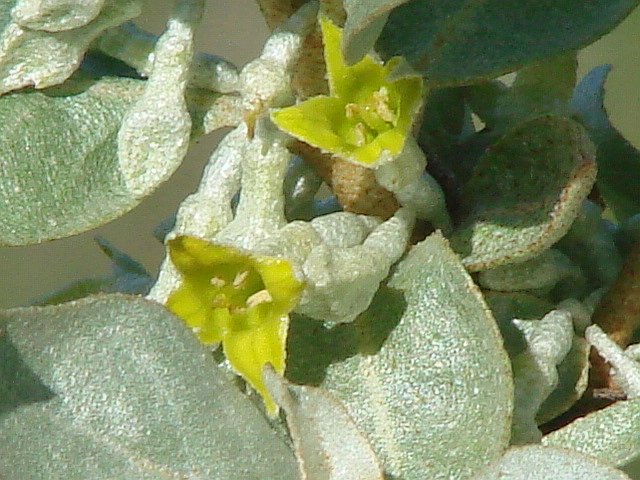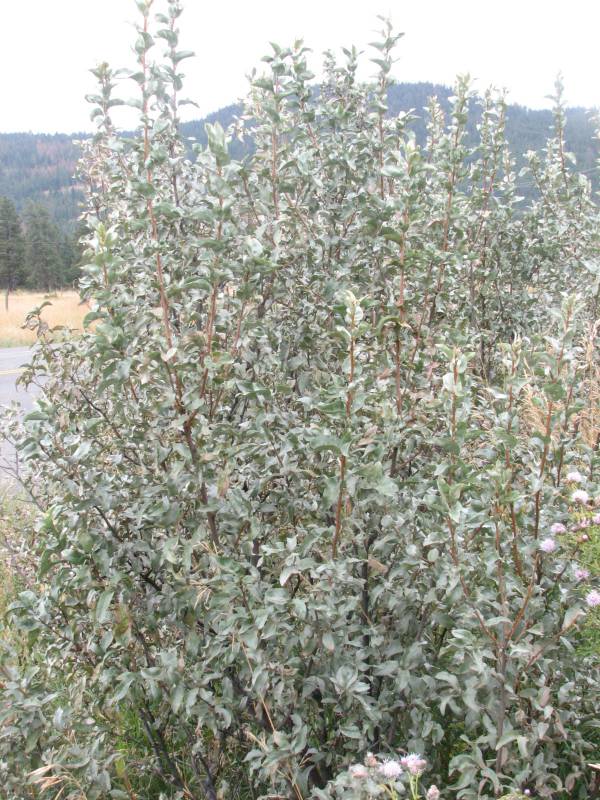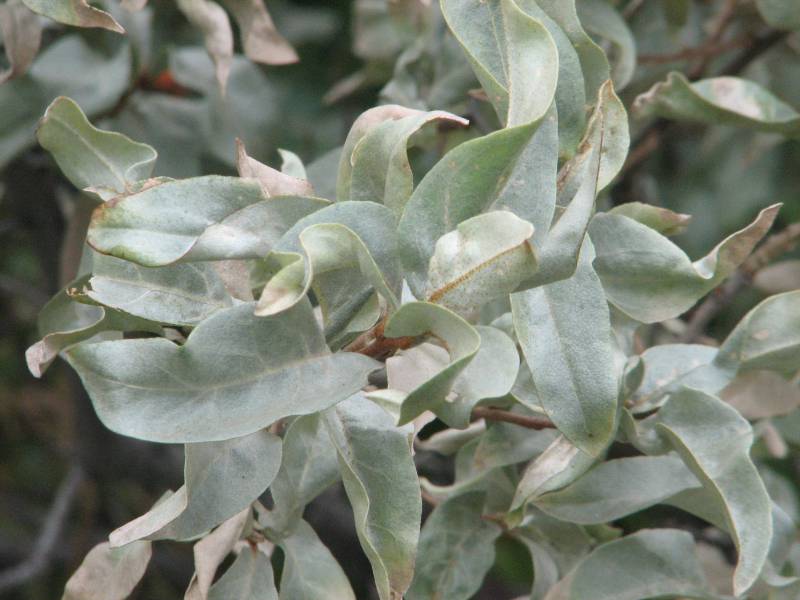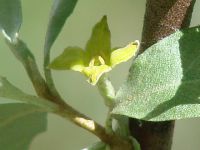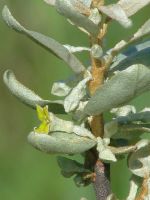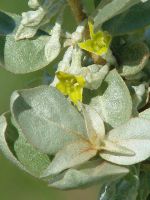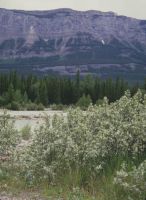Distribution: Occurring east of the Cascades crest in Washington; Alaska to Washington and California (but not Oregon), east to the Rocky Mountains, Great Plains, and eastern Canada.
Habitat: Gravel benches and scabland, commonly along watercourses.
Flowers: June-July
Origin: Native
Growth Duration: Perennial
Conservation Status: Not of concern
Rhizomatous, unarmed shrubs, spreading to erect, 1-4 m. tall; young branches brownish-scurfy, old branches dark grayish-red.
Leaves alternate, short petiolate, the blades lanceolate to oblanceolate, 2-7 cm. long, acute to obtuse, usually silvery-scurfy on both surfaces.
Flowers 1-3 in leaf axils or clustered at the base of new twigs; pedicles 1-2 mm. long; hypanthium surrounding, but not adnate to the ovary; calyx 4-lobed; petals wanting; stamens 4, attached near the top of the hypanthium; ovary superior, the wall hardened and longitudinally fluted.
Drupe obovoid, 9-12 mm. long
Publication: Flora of the Rocky Mountains 582. 1917.
PNW Herbaria: Specimen records of Elaeagnus commutata in the Consortium of Pacific Northwest Herbaria database
WA Flora Checklist: Elaeagnus commutata checklist entry
OregonFlora: Elaeagnus commutata information
E-Flora BC: Elaeagnus commutata atlas page
CalPhotos: Elaeagnus commutata photos

